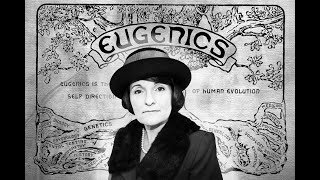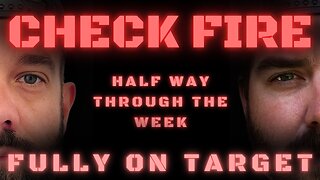Premium Only Content

Masking Mandates for Children
PROOF THAT MASKS DO MORE HARM THAN GOOD (For the children, and anti obligatoriness)
By: Dr Vernon Coleman MB ChB DSc
https://vernoncoleman.org/search?keywords=masks
1. Over a dozen scientific papers show clearly that masks are ineffective in preventing the movement of infective organisms. They also reduce oxygen levels and expose wearers to increased levels of carbon dioxide.
2. Face masks have been proven to do harm but not proven to do good. Forcing citizens to wear them is a form of oppression. Support for mask wearing comes from individuals promoting face masks for political rather than health reasons. There is now considerable support for masks to be worn out of doors and even in the home. There is absolutely no scientific reason for this.
3. Nine medical authors from Australia and Vietnam studied cloth face masks and concluded that cloth masks should not be recommended for health care workers.
4. Wearing a mask for long periods could cause pulmonary fibrosis. Loose fibres are seen on all types of masks and may be inhaled causing serious lung damage.
5. Researchers in France proved that wearing a surgical mask causes breathlessness.
6. Masks should be changed every couple of hours and old masks should be disposed of safely. If cloth masks are worn, they should be washed at high temperatures twice a day. Disposable masks should be discarded after one use. (Masks thrown down in the street are a serious health hazard.)
7. Evidence proving the danger and ineffectiveness of masks has been banned, blocked or deleted. Discussion and debate about the value of face masks is suppressed.
8. In September 2020, 70 Belgian doctors claimed that mandatory face masks in schools are a major threat to child development.
9. A leading German virologist claims that face masks are a wonderful breeding ground for bacteria and fungi.
10. Dentists in New York have reported that mask wearing causes gum disease and dental cavities. The dentists say that face coverings lead to mouth dryness and an increase in the build-up of bacteria.
11. Exemption certificates/cards can be obtained online for those who are unable to wear a mask.
12. Some face masks may have pores five thousand times larger than virus particles.
13. Masks should never be touched once in place. If a mask is touched it must be replaced immediately.
14. No one should wear a mask while exercising. There have been several reports of masked children dying while exercising. There is evidence showing that mask wearing reduces blood oxygen levels even when the wearer is standing still. Individuals who exercise are likely to sweat. Masks then become damp more quickly and the damp promotes the growth of microorganisms.
15. There is a risk that viruses may accumulate in the fabric of a mask – thereby increasing the amount of the virus being inhaled.
16. Putting a mask on a baby or unconscious patient is dangerous. The mask may result in the wearer choking on vomit.
17. Some of the carbon dioxide exhaled with each breath is trapped behind the mask.
18. One study of health workers wearing masks showed that a third developed headaches requiring painkillers. Another study showed that 81% developed headaches – and their work was affected.
19. A mask can reduce blood oxygenation by up to 20% – leading to a possible loss of consciousness. At least one road crash has been blamed on a driver wearing a mask. Police reported that the driver of a single car crash in New Jersey is believed to have passed out behind the wheel after wearing a mask for too long.
20. Over a dozen studies failed to show that wearing a mask provides protection against infection.
21. Masks are being used as a conditioning tool to make us more compliant.
22. A study of 53 surgeons showed that there were statistically significant falls in blood oxygen levels after masks had been worn for a few hours. It is important to remember that surgeons who wear masks (and not all do) work while standing, rather than walking, and they work in a controlled, air-conditioned environment. They do not touch their masks and they change them regularly.
23. The fact that the rules about mask wearing vary from place to place proves that there is no `science’ behind the advice to wear masks. So, for example, why should the coronavirus spread from person to person in a shop but not in an office?
24. There were no mask requirements in Sweden, and the mortality rate there remained below a bad flu season. The average age of Swedish citizens who died of covid-19 was well over 80 years.
25. A meta-analysis of controlled trials of face masks published in May 2020 by the Centers for Disease Control in the US, concluded that masks `did not support a substantial effect on transmission of laboratory confirmed influenza, either when worn by infected persons or by persons in the general community to reduce their susceptibility’.
26. A meta- analysis published in May 2016 concluded that masks did not have any useful effect but that reuse of contaminated masks did transmit infection.
27. In 2019, a paper involving 2,862 volunteers and published in the Journal of the American Medical Association showed that both surgical masks and N95 respirators `resulted in no significant difference in the incidence of laboratory confirmed influenza’.
28. In 2011, a meta-analysis of 17 separate studies showed that none of the research showed masks to be useful in preventing influenza infection.
29. In 2009, a paper published in the Journal of Occupational Environmental Hygiene concluded that particles passed through masks and that expelled particles were deflected around the edges of masks.
30. Research published in 2005 concluded that there was more transmission of virus laden particles from masked individuals than from unmasked individuals because of `leakage’ jets of air. Backward unfiltered air flow was found to be stronger with mask wearers (suggesting that standing behind someone wearing a mask could be dangerous).
31. A study published in the BMJ in 2015 found that the penetration of cloth masks was almost 97%.
32. N95 masks are made with a 0.3 micron filter. The name comes from the fact that 95% of particles having a diameter of 0.3 microns are filtered by the mask. Unfortunately, coronaviruses are approximately 0.125 microns in diameter.
33. An article entitled `Is a mask necessary in the operating theatre?’, published in the Annals of the Royal College of Surgeons in 1981 found no difference in wound infection rates with or without surgical masks. A paper published in 1991 showed that the use of masks slightly increased the incidence of infection.
34. It was proved in 1920 that cloth masks do not stop flu transmission. It was concluded then that the number of layers of fabric required to prevent pathogen spread would be suffocating. It was also recognized that there was a problem with leakage around the edges of masks.
35. Mask wearers are encouraged to demonize non-mask wearers (even if they are disabled in some way). This is part of the psychological warfare battle being fought.
36. There have been suggestions from various authorities that mask wearing and social distancing will need to be permanent. It has also been suggested that masks should be worn in the home.
37. Masks collect fungi, bacteria and viruses and because of the moist air exhaled they are an excellent breeding ground.
38. `We know that wearing a mask outside health care facilities offer little, if any, protection from infection…In many cases the desire for widespread masking is a reflexive reaction to anxiety over the pandemic.’ – New England Journal of Medicine, 2020
39. Research published in June 2020 suggested that the reduction in blood oxygen and the increase in carbon dioxide, resulting from mask wearing, might cause a strain on the heart and kidneys.
40. Mask wearers are more likely to develop infection than non-mask wearers. This may be due to the fact that masks reduce blood oxygen levels and adversely affect natural immunity. It is likely that anyone who wears a face mask for long periods will have a damaged immune system – and be more susceptible to infection. Studies have shown that hypoxia can inhibit immune cells used to fight viral infections. Wearing a mask may make the wearer more likely to develop an infection – and if an infection develops it is likely to be worse.
41. Masks can cause hypercapnia (increased carbon dioxide). Symptoms of hypercapnia include drowsiness, dizziness and fatigue.
42. A mask worn by a child in school was examined in a laboratory. Tests showed 82 bacterial colonies and 4 mould colonies growing on the mask.
43. In May 2020, Dr Fauci, the American covid-19 expert, concluded that masks are little more than symbolic – virtue signaling.
44. Although they have not been tested extensively, visors are probably just as useless as masks but they may be less dangerous to wearers.
-
 12:50
12:50
LOLISTOICS
1 year agoEugenics and Planned Parenthood – Margaret Sanger - Lolistoics recommends Forgotten History
3.04K2 -
 2:18:00
2:18:00
I_Came_With_Fire_Podcast
12 hours agoTRUMP & THE SAUDIS | DEMS FAFO
44.9K7 -
 1:37:09
1:37:09
Badlands Media
22 hours agoAltered State S3 Ep. 28: Trump’s Middle East Masterstroke and the War on Permanent Enemies
95.2K9 -
 2:03:01
2:03:01
Geeks + Gamers
7 hours agoGeeks + Gamers Play Among Us
50.3K -
 11:15:32
11:15:32
Spartan (Pro Halo esports Player)
15 hours agoStar Wars for a bit, then warming up for Shopify Scrim @ 4 EST
41.5K1 -
 25:32
25:32
The Rad Factory
10 hours ago $0.82 earnedTesting Temu Pit Bike Upgrades
27K3 -
 10:27:43
10:27:43
Phyxicx
11 hours agoRocket League, Halo, and chill. I've been in a gaming rut lately - 5/14/2025
14.4K3 -
 4:13:18
4:13:18
Deaf Gamer Girl
16 hours agoDGG playtime | May Creator Program Day #13
10.3K -
 9:47:47
9:47:47
Dr Disrespect
16 hours ago🔴LIVE - DR DISRESPECT - PGA 2K25 - ALL NEW SEASON 2!
151K14 -
 2:48:47
2:48:47
Mally_Mouse
11 hours agoLet's Play!! -- P.O. Unboxing and more!
39.6K4